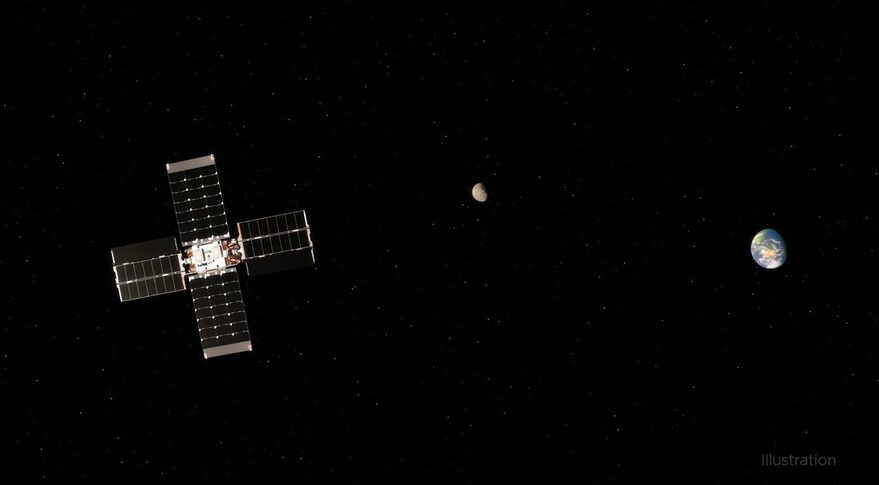The engines of the Lunar Flashlight spacecraft, designed to search for ice in lunar craters, work inefficiently due to clogging of pipelines. Engineers are trying to find a solution to this problem so that it can continue its mission.

Problems with Lunar Flashlight engines
On January 12, NASA engineers reported that three of the four Lunar Flashlight spacecraft engines could not operate at full capacity. The reason for this is the clogging of the pipelines that supply fuel to them, which is why it is impossible to provide them normally.
Now the dispatchers plan to use them for a longer time, hoping that in the end it will give the same effect as the pulse program that was approved earlier. The mission’s leadership expects that alternative approaches will pay off. Lunar Flashlight maneuvers near the Moon should begin in February, and it should finally enter orbit in four months.
The device is designed to work in an orbit that is very similar to that of the CAPSTONE CubeSat, which has been operating near the Moon since November. It will provide for flights over the south pole of our moon at an altitude of 15 km. There, the device, which is also called a “Lunar Flashlight”, will look for water ice in the shadow of craters, the bottom of which never reaches sunlight.
Problematic engines
At its core, Lunar Flashlight is a powerful laser. It should direct its beam to the bottom of the craters and illuminate the ice with it. However, not only the payload is interesting in it, but also the engines. It uses a “green” fuel called Advanced Spacecraft Energetic Non-Toxic (ASCENT).
ASCENT’s effectiveness was demonstrated back in 2019 during a special mission. However, it is the Lunar Flashlight that is the first device to use it outside of Earth’s orbit. At one time, the developers even had to change its engines to a system developed by the Georgia Institute of Technology.
This replacement led to a delay in the preparation of the mission. Initially, it was planned to launch Lunar Flashlight as an additional load of Artemis I, but engineers did not have time to prepare the device until the end of 2021. Therefore, it had to be launched together with the Japanese and Arab missions in December 2022.
However, if the probe had started in November, it might not have affected its work in any way. After all, many devices from the pile of CubeSats that were put into space during Artemis I were never able to start their mission. Moreover, for many of them, the causes of the malfunction remained unknown.
According to spacenews.com
Follow us on Twitter to get the most interesting space news in time
https://twitter.com/ust_magazine

